
Overview
The fishery and aquaculture industry encompasses the cultivation, harvesting, and processing of aquatic organisms in various environments such as oceans, rivers, lakes, and controlled facilities. This industry is divided into two main sectors: capture fisheries, which involve the wild catching of fish and other seafood, and aquaculture, which refers to the farming of aquatic species.
Capture fisheries rely on advanced techniques and equipment for sustainable and efficient harvesting, including trawling, longlining, and netting. This sector is crucial for supplying wild-caught fish and seafood, which often command higher market prices due to their perceived quality and natural origin.
Aquaculture, on the other hand, involves the breeding, rearing, and harvesting of fish, shellfish, and aquatic plants under controlled conditions. This sector has seen significant growth due to its potential to meet the rising global demand for seafood while alleviating pressure on wild fish stocks. Aquaculture practices vary widely, from extensive systems like pond farming to intensive systems such as recirculating aquaculture systems (RAS) and integrated multi-trophic aquaculture (IMTA).
The industry is highly technical, requiring expertise in biology, ecology, engineering, and economics. Professionals in this field must address challenges such as disease management, feed optimization, environmental impact, and regulatory compliance. Innovations in genetics, biotechnology, and sustainable practices are continuously driving the industry forward, making it a dynamic and essential component of global food security and economic development.
Depending on specific features and functions, GAO Tek’s Tek’s Other gas detectors are sometimes referred to as Gas sensors, Gas analyzers, Gas monitors, Gas detection systems, Gas detection instruments, Gas leak detectors, Gas alarms, Gas detection devices, Gas sniffers, and Gas metering devices.
Furthermore, GAO Tek’s Gas Detectors are further grouped into
Alarm-enabled, Handheld, High Precision, Data Logging, Outdoor, and Wireless
GAO Tek’s Other gas detectors have the following applications in Fishery and Aquaculture industry:
Monitoring Water Quality:
- Dissolved Oxygen Levels: Maintaining optimal dissolved oxygen levels is vital for the health and growth of fish. Gas detectors equipped with oxygen sensors are used to continuously monitor and adjust oxygen levels in aquaculture tanks and ponds, preventing hypoxia and ensuring the well-being of the stock.
- Ammonia Detection: Ammonia buildup, resulting from fish waste and uneaten feed, can be toxic to fish. Gas detectors help in monitoring ammonia concentrations, allowing timely interventions such as water changes or the use of biofilters to mitigate harmful effects.
Ensuring Worker Safety:
- Hazardous Gas Detection: Fish processing facilities often use chemicals like chlorine and ozone for disinfection and preservation. Gas detectors are essential for detecting leaks and ensuring that workers are not exposed to dangerous levels of these gases.
- Confined Space Monitoring: Aquaculture facilities may have confined spaces such as storage tanks and silos where dangerous gases can accumulate. Gas detectors ensure these areas are safe for workers by monitoring for gases like methane, hydrogen sulfide, and carbon dioxide.
Environmental Protection:
- Greenhouse Gas Monitoring: Aquaculture operations can contribute to greenhouse gas emissions, particularly methane and nitrous oxide. Gas detectors are used to monitor and manage these emissions, helping facilities comply with environmental regulations and reduce their carbon footprint.
- Leak Detection: Gas detectors help identify leaks in gas supply systems, preventing the release of harmful gases into the environment and reducing the risk of fires or explosions.
Process Optimization:
- Controlled Atmospheres: In hatcheries and nurseries, maintaining specific gas concentrations can enhance the growth and survival rates of juvenile fish. Gas detectors are used to monitor and control the levels of oxygen, carbon dioxide, and other gases in these controlled environments.
- Feed Storage: Proper storage of fish feed is crucial to prevent spoilage and nutrient loss. Gas detectors help monitor the storage environment, detecting gases that may indicate spoilage or contamination, thus ensuring the quality and safety of the feed.
More information on Gas Detectors and their applications in other industries can be found on this page
This category page lists related products and
Environmental test instruments
Systems in The Fishery And Aquaculture Industry Utilizing Gas Detectors
Here are some popular systems in Fishery and Aquaculture industry using Gas Detectors:
Water Quality Monitoring Systems
- AquaManager: An integrated software solution that uses gas detectors to continuously monitor dissolved oxygen, ammonia, and other critical water quality parameters, ensuring optimal conditions for aquatic life.
- Aquafarm Manager: This software combines gas detection data with environmental monitoring to provide real-time insights into water quality, helping to maintain healthy conditions for fish and other aquatic organisms.
- Fish Farm Tracker: Offers comprehensive water quality management by integrating gas detector readings for oxygen and ammonia, along with other parameters, to optimize fish health and growth rates.
Worker Safety Systems
- GasAlertMicroClip: A portable gas detection system that integrates with software to monitor hazardous gases such as chlorine, ozone, and hydrogen sulfide in fish processing facilities, ensuring worker safety.
- BW Clip Real-Time: Provides continuous monitoring of confined spaces and integrates with safety software to alert workers of dangerous gas levels, facilitating prompt evacuation and response.
- Honeywell Safety Suite: An advanced safety management software that integrates gas detector data to monitor and manage worker exposure to hazardous gases, ensuring compliance with safety regulations.
Environmental Protection Systems
- EnviroSuite: A comprehensive environmental management software that uses gas detector data to monitor greenhouse gas emissions and other pollutants from aquaculture operations, aiding in regulatory compliance and sustainability efforts.
- AquaRealTime: Integrates gas detectors to monitor and report on environmental impacts, including greenhouse gas emissions, providing actionable insights to minimize ecological footprints.
- EcoTracker: Focuses on environmental monitoring by using gas detection data to track emissions and leaks, helping aquaculture facilities implement effective environmental protection strategies.
Process Optimization Systems
- Hatchery Optimizer: This software uses gas detector data to maintain controlled atmospheres in hatcheries, optimizing conditions for the growth and survival of juvenile fish.
- RAS Manager: Designed for recirculating aquaculture systems, this software integrates gas detector readings to manage oxygen, carbon dioxide, and other gas levels, ensuring efficient and sustainable operation.
- FeedStore Pro: Monitors gas levels in feed storage environments using gas detectors to prevent spoilage and contamination, ensuring the quality and safety of stored fish feed.
Aquaculture Facility Management Systems
- AquaPlan: An all-in-one management software that integrates gas detector data for comprehensive monitoring of water quality, worker safety, and environmental impact, providing a holistic view of facility operations.
- SmartFarm: Combines gas detection with other sensors to provide real-time data on various parameters within aquaculture facilities, enabling proactive management and optimization.
- AquaMonitor: This software integrates gas detector readings to provide a detailed overview of facility conditions, helping managers make informed decisions to improve efficiency and productivity.
GAO Tek’s targeted markets are North America, particularly the U.S., and Canada.
Complying With Government Regulations
GAO Tek’s Gas Detectors comply or help our customers comply with U.S. government regulations such as:
- Occupational Safety and Health Administration (OSHA) – Standard 1910.146 (Permit-Required Confined Spaces)
- Environmental Protection Agency (EPA) – Clean Water Act (CWA) Section 304(a) (Water Quality Criteria)
- National Institute for Occupational Safety and Health (NIOSH) – Recommended Exposure Limits (RELs) for Ammonia
- Food and Drug Administration (FDA) – Fish and Fishery Products Hazards and Controls Guidance (Chapter 11: Environmental Chemical Contaminants and Pesticides)
- National Oceanic and Atmospheric Administration (NOAA) – Marine Aquaculture Environmental Policy Act
- U.S. Coast Guard (USCG) – Regulation on Marine Sanitation Devices (33 CFR Part 159)
GAO Tek’s Gas Detectors comply or help our clients comply with Canadian regulations such as:
- Canadian Occupational Health and Safety Regulations (COHSR) – Part XII (Safety Code for Confined Spaces)
- Fisheries Act (Section 36: Pollution Prevention)
- Canadian Environmental Protection Act (CEPA) – Toxic Substances List
- Canadian Food Inspection Agency (CFIA) – Fish Inspection Regulations
- Health Canada – Guidelines for Canadian Drinking Water Quality (Ammonia)
- Environment and Climate Change Canada (EC) – Aquaculture Activities Regulations (AAR)
Case Studies of Gas Detectors in Fishery and Aquaculture Industry
Gas Detectors are sometimes called Gas sensors, Gas analyzers, Gas monitors, Gas detection systems, Gas detection instruments, Gas leak detectors, Gas alarms, Gas detection devices, Gas sniffers, and Gas metering devices.
Here are some practical examples of using Gas Detectors in the Fishery and Aquaculture industry:
A lobster hatchery in Maine implemented a comprehensive gas detection system to monitor and control dissolved oxygen levels in its tanks. Using advanced gas detectors linked to automated oxygen infusion systems, the hatchery ensured optimal conditions for lobster larvae, significantly improving survival and growth rates. The integration of these gas detectors helped maintain stable oxygen levels, preventing hypoxia and promoting healthier development of the lobsters, ultimately leading to a 20% increase in overall yield.
A Massachusetts aquaculture facility specializing in oyster farming faced challenges with ammonia buildup, which affected oyster health and growth. The facility adopted a gas detection system to continuously monitor ammonia levels in the water. The data from the gas detectors enabled timely interventions, such as water changes and the introduction of biofilters. This proactive approach resulted in a 15% reduction in mortality rates and improved the overall quality of the oysters produced.
An Ohio fish hatchery implemented a gas detection system to monitor carbon dioxide levels in its recirculating aquaculture systems (RAS). High CO2 levels were impacting fish respiration and growth. By using gas detectors to continuously measure CO2 concentrations, the hatchery could adjust aeration rates more effectively. This led to a significant improvement in fish health, reducing stress and increasing growth rates by 12%.
An aquaponics farm in Indiana integrated gas detectors into its water quality monitoring system to track dissolved oxygen and ammonia levels. The farm experienced frequent fluctuations in these parameters, affecting both plant and fish health. The gas detectors provided real-time data, allowing for immediate corrective actions. This system improved the stability of the aquaponics environment, enhancing both fish survival and plant growth, resulting in a 10% increase in overall productivity.
A shrimp farm in Texas faced issues with hydrogen sulfide buildup, which was detrimental to shrimp health. The farm installed gas detectors to monitor hydrogen sulfide levels in the water. The detectors triggered alarms when levels approached dangerous thresholds, allowing for quick remediation measures. This system significantly reduced shrimp mortality rates and improved the overall health and quality of the shrimp, leading to a 25% increase in production efficiency.
A tilapia farm in Florida utilized gas detectors to monitor dissolved oxygen and ammonia levels in its outdoor ponds. The farm had struggled with maintaining optimal water quality due to fluctuating environmental conditions. The implementation of gas detectors provided continuous monitoring, enabling the farm to maintain stable conditions for the tilapia. This resulted in better growth rates and a 20% reduction in fish mortality, enhancing the farm’s profitability.
A trout hatchery in California adopted a gas detection system to manage oxygen levels in its hatchery tanks. The gas detectors ensured that dissolved oxygen remained within optimal ranges, preventing hypoxia and promoting healthy fish development. The system’s efficiency led to a 15% increase in trout survival rates and improved overall growth performance, contributing to higher yields and better-quality fish.
A shellfish farm in Washington state faced challenges with ammonia and hydrogen sulfide levels in its water, affecting shellfish health. By integrating gas detectors, the farm could monitor these harmful gases continuously. The data allowed for timely water quality adjustments, improving shellfish health and reducing mortality rates. The farm saw a 20% increase in shellfish yield and enhanced quality, boosting its market competitiveness.
A salmon farm in British Columbia implemented gas detectors to monitor dissolved oxygen and carbon dioxide levels in its net pens. The farm struggled with fluctuations in these parameters, impacting salmon health. The gas detection system provided real-time monitoring, enabling the farm to maintain optimal conditions. This led to a 15% improvement in salmon growth rates and a significant reduction in disease incidence, enhancing overall farm productivity.
An aquaculture facility in Newfoundland faced issues with ammonia buildup in its recirculating systems, affecting fish health. The facility installed gas detectors to continuously monitor ammonia levels. This allowed for immediate corrective actions, such as adjusting feeding rates and improving filtration systems. The result was a 10% increase in fish survival rates and better overall health, leading to higher quality and more robust fish production.
GAO RFID Inc. RFID Hardware, a sister company of GAO Tek Inc., is ranked as a top 10 RFID supplier in the world. Its RFID, BLE, and IoT products have also been widely used in Fishery and Aquaculture industry.
Agriculture, Forestry & fisheries | RFID solutions
Gao RFID aquaculture asset management solution
Use of Gas Detectors with Leading Software and Cloud Services in Fishery and Aquaculture Industry
GAO Tek has used or has facilitated its customers to use GAO’s Gas Detectors with some of the leading software and cloud services in their applications. Examples of such leading software and cloud services include:
- AquaManager
- Aquafarm Manager
- Fish Farm Tracker
- GasAlertMicroClip
- BW Clip Real-Time
- Honeywell Safety Suite
- EnviroSuite
- AquaRealTime
- EcoTracker
- Hatchery Optimizer
- RAS Manager
- FeedStore Pro
- AquaPlan
- SmartFarm
- AquaMonitor
GAO Tek’s Gas Detectors and their applications in other industries are listed on this
Other related products can be found on this category page
Environmental test instruments
Meeting Customers’ Demands
Large Choice of Products
To satisfy the diversified needs of their corporate customers, GAO Tek Inc. and its sister company GAO RFID Inc. together offer a wide choice of testing and measurement devices, network products, RFID, BLE, IoT, and drones.
Fast Delivery
To shorten the delivery to our customers, GAO has maintained a large stock of its products and can ship overnight within the continental U.S. and Canada from the nearest warehouse.
Local to Our Customers
We are located in both the U.S. and Canada. We travel to customers’ premises if necessary. Hence, we provide very strong local support to our customers in North America, particularly the U.S., and Canada. Furthermore, we have built partnerships with some integrators, consulting firms, and other service providers in different cities to further strengthen our services. Here are some of the service providers in Fishery and Aquaculture industry we have worked with to serve our joint customers:
- AquaSol, Inc.
- InnovaSea Systems
- Pentair Aquatic Eco-Systems
- XpertSea
- Ocean Farm Technologies
- Aquabyte
- Mott MacDonald
- Cardno
- Aquatic Systems Management
- Environmental Systems Research Institute (Esri)
- RSK Group
- ERM: Environmental Resources Management
- Aqua-Logic Inc.
- Poseidon Ocean Systems
- Cooke Aquaculture Inc.
- ReelData AI
GAO has Many Customers in Fishery and Aquaculture Industry
The products from both GAO Tek Inc. and GAO RFID Inc. have been widely used in Fishery and Aquaculture industry by many customers, including some leading companies. Here is more information on applications of GAO RFID Inc.’s products in Fishery and Aquaculture industry.
Agriculture, Forestry & fisheries | RFID solutions
Gao RFID aquaculture asset management solution
Here are some of GAO’s customers in Fishery and Aquaculture industry:
- Atlantic Sea Farms
- Island Creek Oysters
- Acadian Seaplants
- Blue Harvest Fisheries
- American Unagi
- Bell Aquaculture
- Blue Ridge Aquaculture
- AquaBounty Technologies
- RDM Aquaculture
- Superior Fresh
- Global Blue Technologies
- Bowers Shrimp Farm
- Florida Organic Aquaculture
- Wood’s Fisheries
- Pacific Seafood
- American Seafood Company
- Taylor Shellfish Farms
- Kona Blue Water Farms
- Cooke Aquaculture
- Grieg Seafood
- Cermaq Canada
- Clearwater Seafoods
- Marine Harvest Canada
- Sweeney International Marine Corp
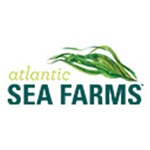
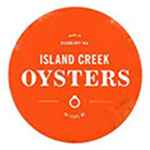




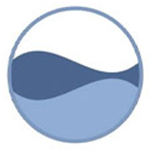

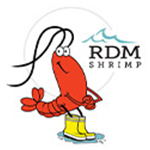
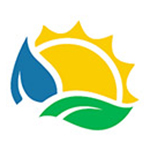
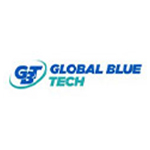
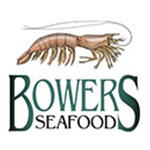





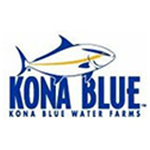

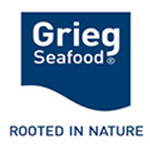




This resource page is for
To facilitate our customers to select our products, we have further classified Gas Detectors by their features
Alarm-enabled, Handheld, High Precision, Data Logging, Outdoor, and Wireless
Below are other resources containing useful information on Gas Detectors:
FAQs on Other Gas Detectors on GAOTek.com
How to Choose Other Gas Detectors
Components of Other Gas Detectors
Operation, Maintenance & Calibration of Other Gas Detectors
Customers in the U.S. and Canada of Other Gas Detectors
Contact Us
Here are GAO Tek’s Other gas detectors and they are further organized by feature:
Alarm-enabled, Handheld, High Precision, Data Logging, Outdoor, and Wireless
We ship overnight to anywhere in the continental U.S. and Canada from one of our local warehouses.
If you have any questions about our products or want to place an order, our technical experts can help you.
Please fill out this form or email us
